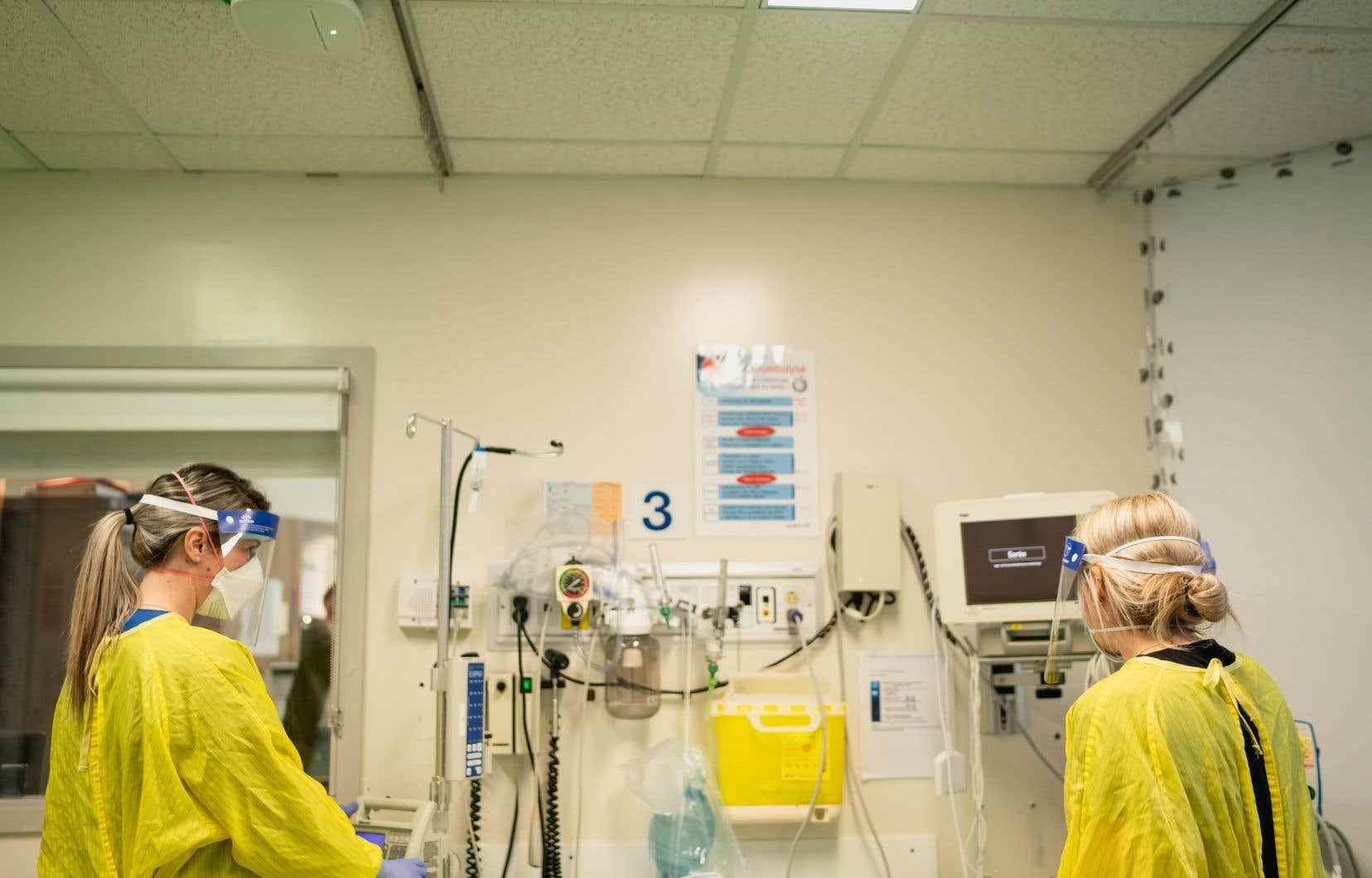The emergency rooms of Quebec hospitals have “reached a breaking point”, and their congestion “results in a breach of security for the population”. The Regroupement des chefs d’urgence du Québec is asking the presidents and CEOs of health establishments to offer them more support during this time of crisis.
In a letter sent to the CEOs on Friday and of which The duty obtained a copy, the group of nearly 60 doctors informs the CIUSSS and CISSS that they have “the responsibility to regain control of a situation which, with the foreseeable occurrence of another wave of COVID and the imminent start of the flu season, threatens to get worse”.
The emergency rooms of Quebec hospitals are overflowing to such an extent that the Minister of Health and Social Services, Christian Dubé, announced last week the formation of a crisis unit. The College of Physicians of Quebec said Monday to be part of it.
According to the Regroupement des chefs d’urgence du Québec, “the persistent and recurrent closures of hospital beds force emergency departments to disproportionately bear the burden of hospital overcapacity”.
In the missive, the group of doctors deplores that “many emergencies”, which have “even exceeded the capacity of their corridors”, are forced to “hospitalize patients for several hours in the ambulatory cabins or the waiting room, fault of stretchers, causing a snowball effect on the congestion itself”.
“Emergencies are now condemned to sacrifice their primary mission, which is to treat in a timely manner people whose clinical condition is unstable, even potentially fatal”, we continue.
According to the group of doctors, the current crisis is undermining the morale of caregivers and emergency managers, who are leaving the ship in large numbers.
Second Letter to the CEOs
The Regroupement des chefs d’urgence du Québec is asking the CEOs of health establishments to support them. He sent them a first letter to this effect last June. Since then, the emergency situation has deteriorated.
“We have not received the support of our management to better distribute the pressure between the various structures of the network, to mitigate the consequences on the emergency services and on the safety of patient care”, affirm the emergency managers. in the letter, sent in certified copy to the Minister of Health and Social Services, Christian Dubé.
In interview at To have tothe president of the Regroupement, the DD Marie-Maud Couture, ensures to be in “collaboration and non-confrontation” mode with the CIUSSS and the CISSS.
“It’s not that we are angry with the CEOs, but we have the impression that there is no one who is accountable,” she said. We can improve our internal process in emergencies, we can try to reduce traffic upstream of the emergency room, but the big problem is really hospital congestion. »
She recalls that patients who no longer require short-term care remain hospitalized because they are waiting for a place in a CHSLD, an intermediate resource or rehabilitation. As of October 21, 13% of hospital beds in Quebec were occupied by these users, according to the Ministry of Health and Social Services.
However, these patients prevent patients on stretchers from going upstairs. “As the emergency room is always open, it pushes back to the emergency room,” explains the DD Sewing.
Overcapacity: also on the floors
The group believes that emergencies do not have to be the only ones to find themselves in “overcapacity”: the hospital units on the floors could too.
“If I’m 150% in the emergency room, why shouldn’t I be 150% on the floors? ask the DD Sewing. It may be less risky for the patient who is already stabilized to be upstairs than for the next one who does not have access to a stretcher in the emergency room. »
The DD Véronique Gauthier, co-head of the emergency department at the Saint-Jérôme hospital, also believes that the floors could exceed their hospital capacity when necessary. This, she said, would “spread the risk” across hospitals.
“When our resuscitation rooms are full, when we call the coordinators and directors on duty and say to them ‘what are we doing?’ the answer is always ‘we don’t have place, we don’t have beds,” she says. [Lorsqu’on leur répond] “OK, but here, we have no room to receive new unstable patients [à l’urgence]”, the answer is: “we don’t have a bed”. »
The DD Véronique Gauthier believes that the establishment of hospital overcapacity protocols is a solution that could have shorter-term effects, even if it requires a change of mentality. The emergency is still considered “the valve of the hospital”, and it seems acceptable that chaos reigns there, she laments.
In its letter, the group recommends a dozen other measures to improve the situation in emergency rooms, such as: bringing “managers of other services to account for unjustified refusals and unacceptable delays when transferring patients from urgency”; ensure “smooth management of hospital beds 24 hours a day, 7 days a week” and avoid resorting to “closing hospital beds and long-term beds to compensate for the lack of human resources”.
The Minister of Health and Social Services, Christian Dubé, should reveal this week the composition of his crisis unit responsible for proposing solutions to the overflow in emergencies. His cabinet assures that people from the field will be part of it. The College of Physicians, which met twice with the Regroupement des chefs d’urgence du Québec in October, is one of them.
The stretcher occupancy rate averaged 121% in Quebec emergency rooms Monday at 11 a.m. This percentage reached 133% in Montreal, 143% in Outaouais, 147% in the Laurentians and 168% in Lanaudière.
